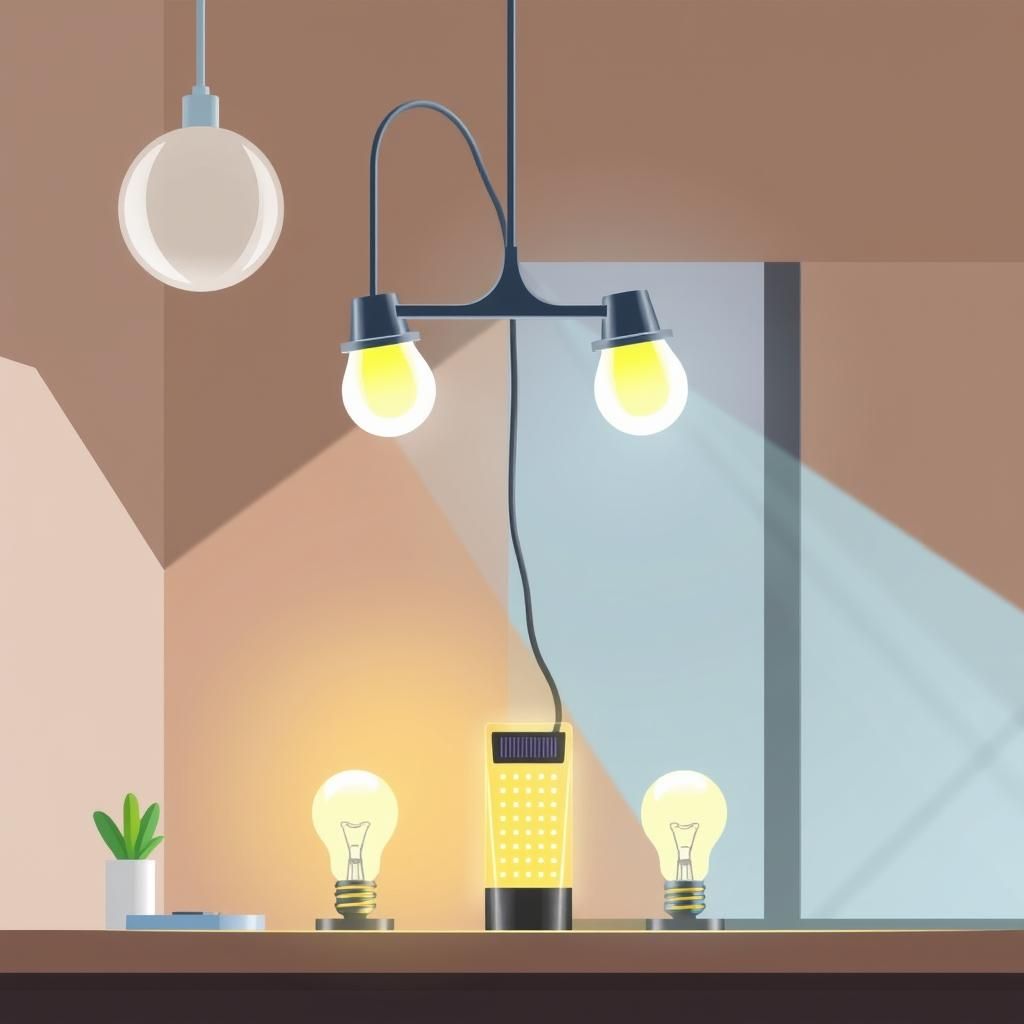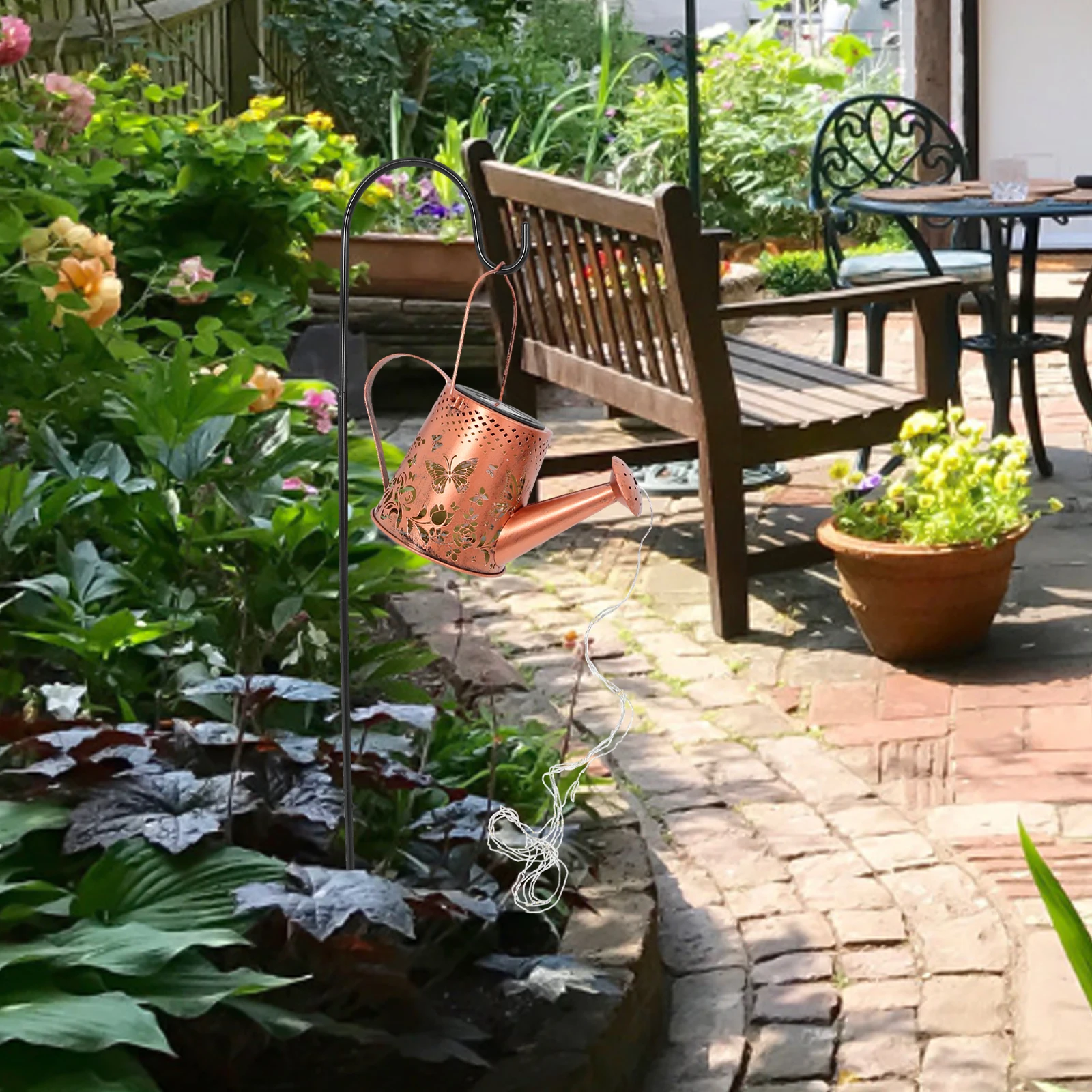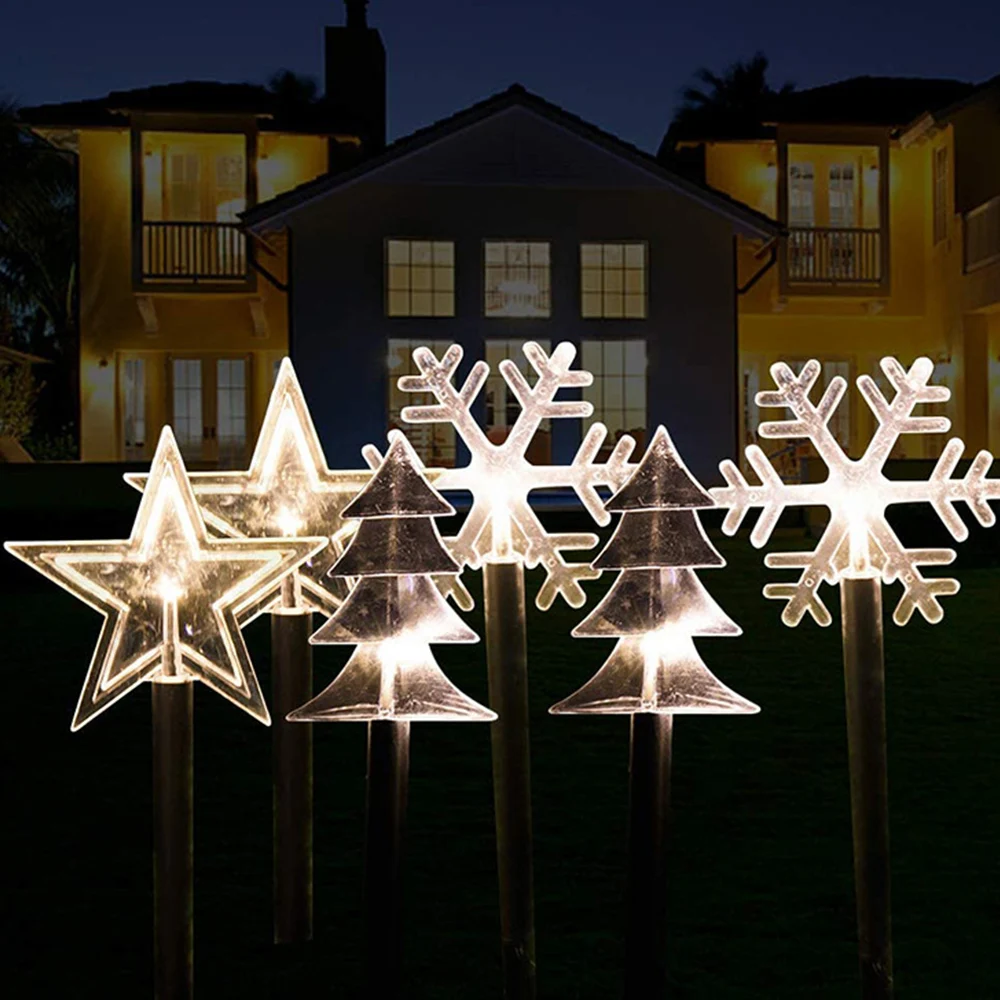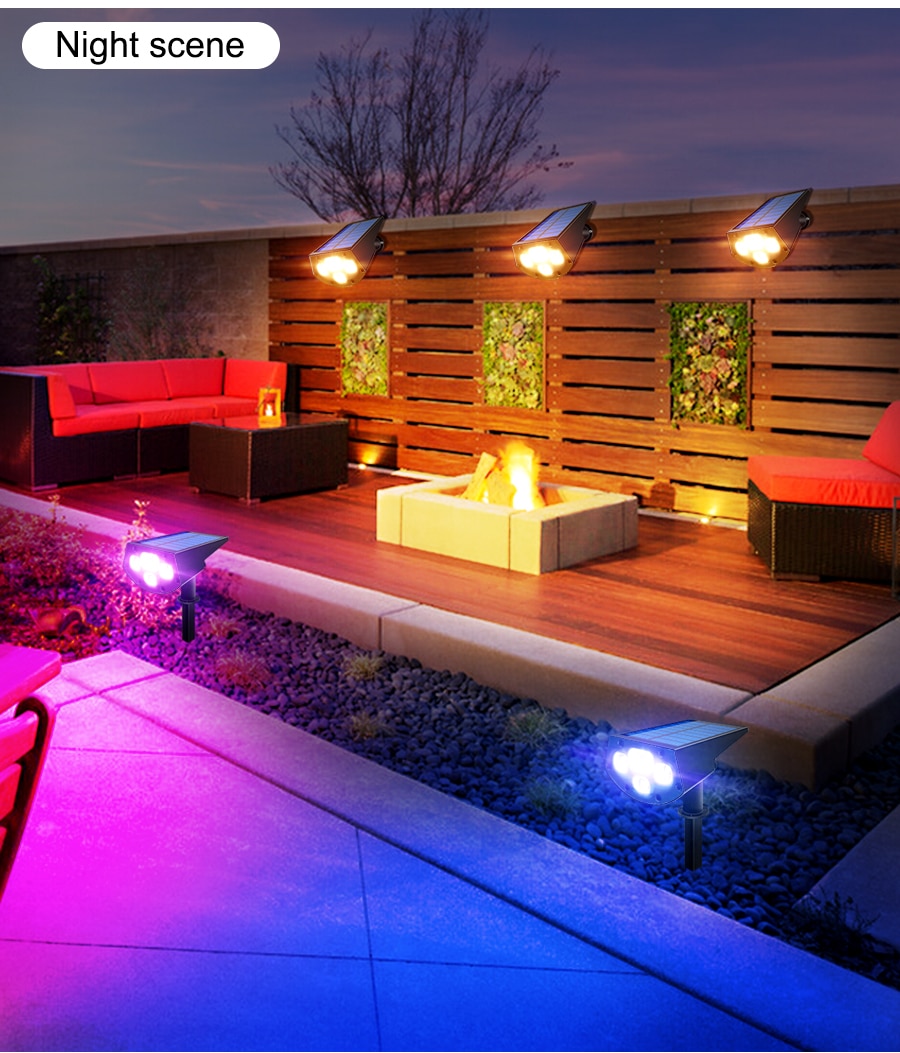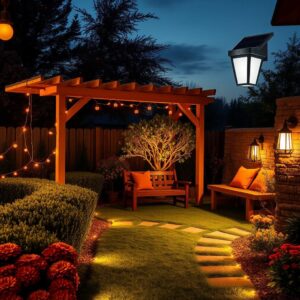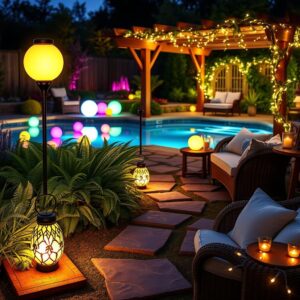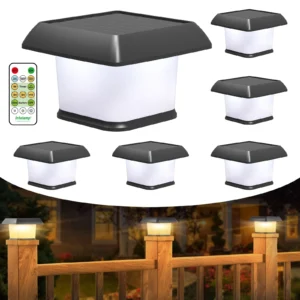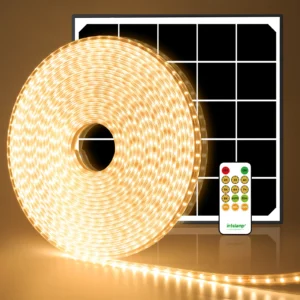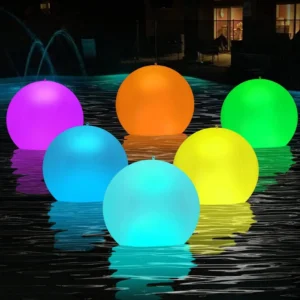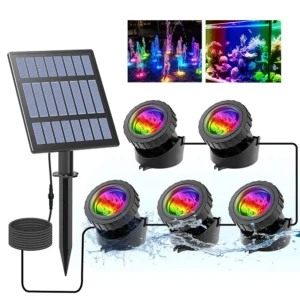Solar Watering Kettle Light – Iron Material Garden Decoration
Understanding Solar Light Charging Without Sunlight
Picture this: your trusty solar light, designed to soak up the sun’s rays by day and shine bright by night, suddenly finds itself in a gloomy corner or caught in a murky winter spell. Does that mean it’s doomed to flicker out, powerless without the sun’s direct kiss? Not exactly. Let’s break down how solar lights normally charge and explore what really happens when sunlight is scarce—or missing entirely.
How Solar Lights Normally Charge
At the heart of every solar light is a solar panel, a simple but clever piece of tech that turns light into electricity. Underneath its glassy surface are photovoltaic cells that capture sunlight and convert it to power, charging the internal battery. The brighter and stronger the sunlight, the more efficiently these cells do their job—think of it as filling up a gas tank. Direct sun showers the panel with intense light, ramping up energy storage quickly.
But here’s a key point: it’s not just about any light—it’s about intensity. Dull, weak light won’t fuel your solar light nearly as well as a clear, bright day. So, let’s get one thing straight: if your solar light spent its days in a pitch-dark closet, it wouldn’t gain much juice, no matter how nifty it is.
Can Solar Lights Charge Without Sun?
Here’s where the myth-busting begins. The story that solar lights only charge under blazing sunlight is too neat to be true. Solar panels are designed to convert light, period. They respond not just to direct sun but to a spectrum of light types and intensities—think overcast days, filtered light through windows, or even certain artificial light sources.
Yes, solar lights can gather power from indirect sunlight—like that soft glow on a cloudy afternoon—or from indoor lamps mimicking daylight to a degree. The charge won’t be as robust or fast; it’s somewhat like filling your tank with a slow drip instead of a flood. But it can happen. This flexibility allows solar lights to keep going, even when the sun’s playing hard to get.
The takeaway? Solar lights don’t demand harsh, direct sunlight only. They lean on it heavily for best performance, but alternative light sources and indirect rays still keep their batteries humming—just at a gentler pace. So the next time your solar light isn’t catching full sun, don’t count it out. It’s quietly soaking up whatever light it can find, working to stay alive and glowing for your evening enjoyment.
For a deeper dive into these solar light myths and realities, Maverick LED offers a solid take on why solar lights are more adaptable than you might think. After all, good lighting isn’t about the sun alone—it’s about smart design and knowing how to keep your garden glowing, rain or shine.
Solar Puck Light – Waterproof Outdoor LED Pathway Lighting
Charging Solar Lights Using Artificial Light
So, the sun’s taking a day off, but your solar lights still want to shine? No sweat. Solar panels aren’t strictly sun-dependent—they can sip energy from artificial light sources too. While the glow won’t rival a sunny afternoon, it’s a handy workaround when natural light isn’t playing along.
Types of Artificial Light Sources Suitable for Charging
The usual suspects in artificial lighting can step up here. LED bulbs, incandescent lamps, and fluorescent lights all pack enough photons to nudge solar panels into action. LEDs are energy-efficient and long-lasting, but their cooler light spectrum sometimes means slower charging. Incandescent bulbs throw out a warm, broad spectrum that solar panels find easier to absorb, though they’re less eco-friendly and hotter to run. Fluorescent lights hit a middle ground—good output and moderate power use, but beware of flicker and some compatibility quirks with certain panels.
Effectiveness and Efficiency Differences
Charging under artificial light is a bit like filling a bucket with a trickle instead of a stream—it takes longer. Natural sunlight bursts full throttle—broad spectrum, high intensity. Artificial light sources, usually indoors and less powerful, offer a milder glow. That means you’ll need to place lights close—think inches, not feet—from your solar panels to catch enough energy. Expect charging times to stretch out, sometimes requiring several hours under steady light to restore enough power for a night of glowing magic. Still, it’s a perfectly viable option when sunshine is scarce.
Practical Tips for Artificial Light Charging
To make the most of this alternative, position your solar panels directly beneath a strong lamp—desk lamps with halogen or incandescent bulbs work wonders. Keep the panel surface clean and angled toward the light source to drink in every photon. Charge times will vary but plan for 6 to 12 hours under consistent indoor lighting to ensure a solid recharge. If you have multiple lamps, rotate the panels for even exposure. Avoid colored bulbs or dimmed fixtures; the solar cells favor bright, white light that mimics natural daylight as closely as possible.
In a pinch, artificial light charging keeps your garden’s lanterns flickering, backyard pathway guiding, or deck fairy lights humming, especially when the sky won’t cooperate. It’s not just a backup plan—it’s a clever way to keep your solar oasis alive, even on the gloomiest of days. For more detailed tips on optimizing artificial light charging, check out Light Supplier’s guide on charging solar lights without the sun.
2 PCs Set | Solar Candle Stick Lights for Windows with LED and Suction Cups
Indoor Solar Light Charging Methods
When sunlight is scarce or the weather just won’t cooperate, you don’t have to let your solar lights sit dark and forgotten. Charging solar lights indoors can be a surprisingly effective workaround—no sun needed. Let’s break down the no-nonsense ways to keep your garden glowing using what’s inside your home.
Charging Under Household Light Bulbs
Common household lamps offer a steady, familiar source of light that solar panels can draw power from, though it’s not quite the same as soaking up sunshine. Incandescent bulbs, warm LED lamps, and fluorescent lights can funnel enough energy into the solar cells to slowly recharge batteries. Think of this like feeding your solar lights a slow, steady dinner rather than a quick energy shot.
Incandescent bulbs produce a broad light spectrum, but they’re less energy efficient and might generate more heat. LED bulbs, especially full-spectrum or daylight versions, work well because they mimic natural light better while consuming less power. Fluorescent lights fall somewhere in between, offering moderate charging but often with flicker issues.
Position is key: place your solar panel inches away from the bulb, ideally directly underneath or facing it. Charging times vary widely, but expect to leave your lights under a strong lamp for several hours — sometimes up to 8 to 12 hours — to top off the battery meaningfully. It’s not instant magic; patience wins.
USB Charging for Solar Lights
Modern solar lights often come with a hidden ace up their sleeve: USB charging ports. This handy feature lets you bypass all light sources by plugging your solar light right into USB power, offering a fast, consistent charge whenever you need it.
Charging via USB has distinct perks. It protects battery health by delivering steady voltage and current, ensuring your light’s longevity. It’s especially handy during long stretches of gloomy weather or if you’re storing lights over winter. Plus, USB cables are common, so charging can happen from a laptop, power bank, or wall adapter.
Here’s a quick step-by-step to USB charge your solar light:
- Locate the USB port, usually hidden under a panel or at the base.
- Connect the solar light to a USB charger or device.
- Let it charge fully—this can take 4 to 6 hours depending on the battery.
- Disconnect and enjoy fully powered lights, no sun needed.
Whether relying on trusted household bulbs or the safe speed of USB, indoor charging methods keep your solar lights ready to transform your evenings, even when the sky won’t cooperate. It’s about taking control—bringing the sun indoors, one glow at a time.
Solar Stake Light – Star Christmas Tree Snowflake for Garden Decor
Charging Solar Lights Using Indirect Sunlight
Charging your solar lights without the blazing direct sun might seem tricky, but don’t write it off just yet. Indirect sunlight—light that filters through clouds, windows, or surrounding trees—still holds surprising power to juice up those tiny solar panels nestled on your garden fixtures. Here’s a straightforward look at how it works and how you can make the most of it.
Solar panels are clever little things designed to soak up not just direct sunlight but diffused light too. Think of indirect sunlight as a softer, gentler glow rather than a harsh spotlight. Even on a cloudy day or when your solar lights sit near shaded spots, they can steadily collect this diffused light and convert it into energy. Sure, the pace isn’t as rapid as under full sun, but it’s enough to keep those evening glimmers going if given time.
Placement is key here. Position your solar lights, or at least their panels, close to windows or glass doors that catch plenty of daylight. South-facing windows tend to capture the best indirect rays in the northern hemisphere, making them ideal charging spots indoors or on covered patios. Don’t forget to keep those panels spick-and-span! A clean, dust-free surface lets every precious photon pass through, making sure your panels work at peak efficiency.
On cloudy or chilly days, your solar lights might need a bit more patience. Longer charging times are part of the rhythm; it’s nature’s way of slowing the flow but never completely halting it. Rotate your panels during the day if possible—following the light patches as they move can brighten up their intake.
So, while the sun’s full blaze is fashionably reliable, indirect sunlight is a dependable understudy that keeps your solar lights humming. With a little thought on placement and cleanliness, your garden can glow softly even when the sun takes a backseat. After all, every ray counts when you’re crafting your own eco-friendly twilight stage.
Square Ice Cube Solar Lights for Garden Pathway Illumination
Cloudy Day Solar Light Charging
Cloudy days bring a familiar, diffused grayness that softens sunlight into a gentle whisper rather than a bold beam. For solar lights, this muted sunlight means a slower and less intense charge. When thick clouds gather, they block much of the sun’s energy, reducing the brightness that solar panels crave. The result? Batteries refill more slowly, and your solar lights may not glow as brightly or shine as long through the night.
Don’t let dreary skies dampen your solar-powered spirits, though. The truth is, solar lights do still charge on cloudy days—just at a gentler pace. Instead of soaking up the sun’s full power, they gather what little light filters through the clouds. Because of this subtle shift, charging times stretch longer. A solar light that typically charges in six hours of bright sun might need double that time when the skies are overcast.
This gradual charging isn’t a failing, but rather a feature to work with. To keep your garden glowing through dew-soaked mornings and gray afternoons, consider solar lights equipped with larger battery capacities. Bigger batteries hold more stored energy, offering a buffer against slow, cloudy-day charging. This added capacity means your lanterns won’t flicker out prematurely when sunlight is scarce.
Maintaining your solar light batteries becomes especially important in these conditions. Regularly checking battery health, keeping connections clean, and replacing battery packs as needed will help your lights hold on to that precious power longer. Healthy batteries recharge more efficiently, turning minimal light into steadfast illumination.
So next time the clouds roll in, think of your solar lights as patient sentinels, quietly gathering their strength until the skies clear. With a bit of planning—choosing robust batteries and mindful maintenance—you can trust your garden to shimmer softly, no matter the weather. Light may be gentler, but the magic of solar shines on.
Solar Spotlights Outdoor Color Changing LED Lamp
DIY Charging Tricks for Solar Lights Without Sun
When the sky hides its glow and the sun slips behind clouds or walls, your solar lights don’t have to fade into darkness. With a bit of ingenuity and everyday items, you can keep those lights shining bright—even without direct sunlight. Here’s how to harness clever, hands-on methods to boost your solar light charging when the sun takes a break.
Using Mirrors and Reflective Surfaces
Think of mirrors as your solar light’s secret allies, quietly guiding and amplifying every stray beam of light to the solar panels. Position a simple household mirror or a piece of reflective foil to bounce ambient or artificial light right onto the solar cell. It’s a little like coaxing whispers of light to gather and focus, making the most of what’s available. Even a shiny surface angled well can double up the light hitting your solar panels, speeding up the charging process on dim days or indoors where natural light is scarce. Try experimenting with different angles until you find that perfect glint that brightens your panel like a mini sunrise.
Creating Indoor Solar Light Charging Stations
Set up a cozy nook in your home dedicated to breathing energy into your solar lights. Pick a spot near a bright indoor lamp—LED or incandescent bulbs work best—and position your solar lights so they soak in steady artificial light for several hours. This DIY charging station becomes a reliable go-to spot, especially during winter months or rainy spells when outdoor charging falls short. Just remember safety, keep lamps stable and away from any flammable materials, and don’t leave electrical devices unattended. With this simple station, you transform your living room into a power hub, quietly charging your garden’s gentle glow right from inside your home.
Additional Handy DIY Tips
Keeping your solar panels clean can’t be overstated—it’s like wiping away a fog so your panels can drink in light more freely. Give them a gentle wipe every now and then to sweep off dust, dirt, or smudges that block precious rays. Another neat trick is rotating the solar lights during the day to catch whatever patches of light trickle through your windows at different angles. A little shift here and there can mean the difference between a dim flicker and a steady glow after sunset.
These DIY methods don’t just stretch your solar lights’ performance—they invite you to get creative and engaged in your garden’s secret cycle of light and shadow. With mirrors to reflect, rooms to dedicate, and simple care rituals, charging solar lights without sun becomes less about limitations and more about clever possibilities. After all, even on the dullest days, a little human touch can bring your solar garden back to life.
2/6 PCs Set Solar Step Lights – Waterproof Color Changing Outdoor Deck and Stair Lighting
Common Myths About Solar Light Charging
Solar lights have a reputation for demanding full, blazing sunshine to work their magic, but that picture isn’t quite right. Let’s strip away the misconceptions and see what’s really going on.
Myth: Solar Panels Require Direct Sunlight Only
It’s easy to assume solar panels need to bask in direct, golden rays to collect energy. The truth? Solar panels can still drink in light that’s indirect or diffused. They’re not solar divas waiting only for sunbeams; even on a cloudy day or when settled near a bright window, these panels quietly soak up whatever light is available. Artificial light sources—like certain indoor lamps—can help charge them too, just at a gentler pace. So, while direct sunlight is the heavyweight champ for fast charging, it’s by no means the only game in town.
Myth: Solar Lights Won’t Work on Cloudy Days or Indoors
The gloomy, overcast days might dim the charging speed, but they don’t shut it down completely. Solar lights retain a surprising ability to gather ambient light and keep their batteries humming, especially if given some extra time. Indoors, when placed thoughtfully under bright lamps or near windows, these lights can accumulate enough charge to glow come nighttime. This means your garden lanterns aren’t doomed when the sun plays hide and seek; they’re simply on a slower, steady rhythm that keeps them alive until sunlight reigns again.
Myth: USB Charging Is Not an Option for Solar Lights
Some folks still think solar lights are stubbornly old-fashioned, refusing help beyond their built-in solar panels. However, many modern solar lights come well-prepared with USB charging ports, offering a quick and convenient backup when the sun plays hard to get. Plugging in to power up directly doesn’t just speed things along; it can extend battery life by avoiding frequent deep drains. It’s a clean, practical solution that complements the solar magic rather than replacing it.
Why Understanding These Myths Matters for Users
Having the right picture about solar light charging puts you in control. Knowing that indirect light counts and artificial sources can pitch in allows for smarter placement and care. Being open to USB charging means fewer evenings spent in darkness when nature doesn’t cooperate. Busting these myths opens doors to experimenting with your solar lights—trying new spots indoors, using household lamps, or combining methods—transforming your garden into a glowing, sustainable haven no matter the weather. After all, solar lighting is less about perfection and more about creativity and balance, turning your everyday space into something quietly enchanting.

